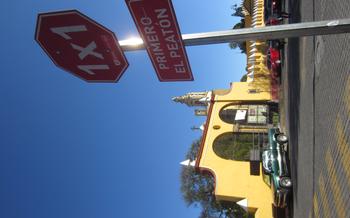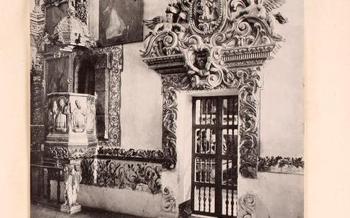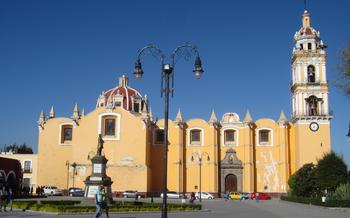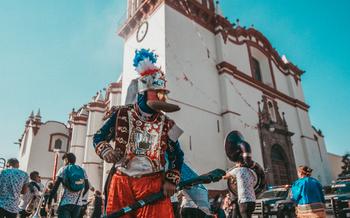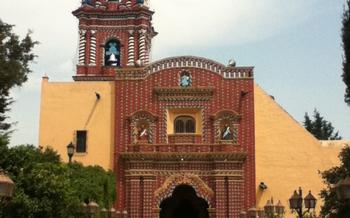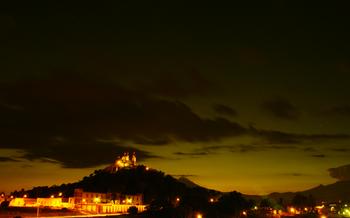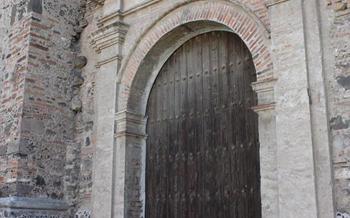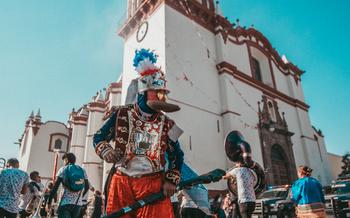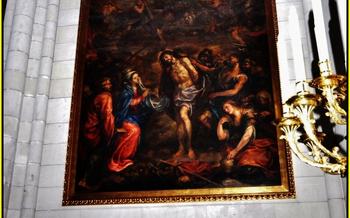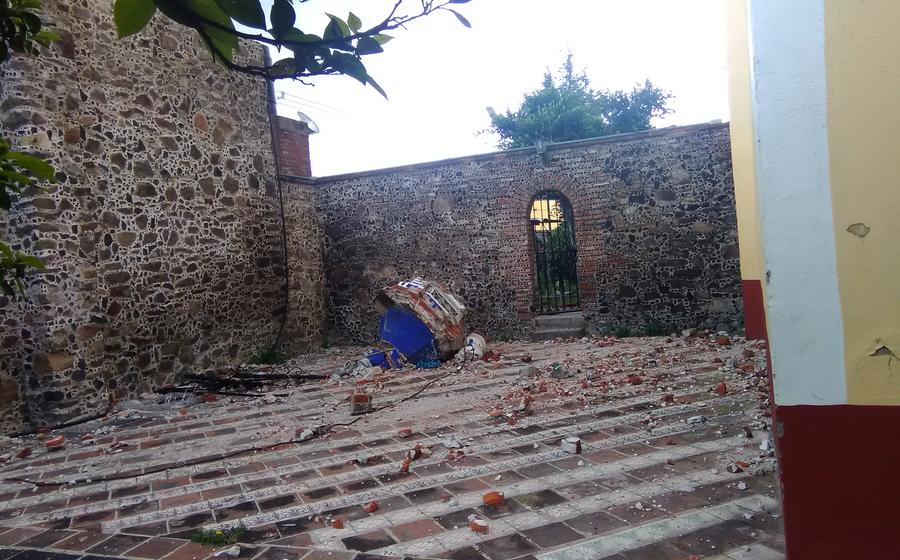
Santa María Tonantzintla
- Planning Your Visit
- The Altars and Retablos
- The Pulpit and Choir Loft
- The Stained Glass Windows
- Local Artisans and Craftsmanship
- Nearby Attractions
Planning Your Visit
Location and Accessibility
The Santa María Tonantzintla church is located in the town of Cholula, just a short drive from the city of Puebla. It is easily accessible by car, and there are also public transportation options available. The church is open to the public daily, and admission is free.
Best Time to Visit
The best time to visit the church is during the early morning or late afternoon to avoid the midday heat and crowds. The church is particularly beautiful at these times of day, when the light casts long shadows across the facade and highlights the intricate details of the carvings.
Guided Tours and Self-Guided Exploration
Guided tours of the church are available, and these can be a great way to learn more about the history and significance of the building. However, it is also possible to explore the church on your own, using a guidebook or the information provided on signage throughout the building.
Tips for Photography
The Santa María Tonantzintla church is a photographer's paradise, with its vibrant colors and intricate details. Be sure to bring your camera and take your time to capture the beauty of the building. A tripod can be helpful for capturing sharp images of the interior, and a wide-angle lens can be useful for getting a good shot of the facade.
The Altars and Retablos
Elaborately carved and gilded altars showcase religious iconography and serve as focal points of worship within the Santa María Tonantzintla church. The main altar, dedicated to the Virgin of Tonantzintla, stands as a testament to the intricate craftsmanship and devotion that went into its creation. Smaller altars, adorned with Talavera tiles and intricate carvings, are dedicated to various saints, each with its unique symbolism and significance. The retablos, or altarpieces, are particularly noteworthy for their intricate details and narratives, depicting scenes from the Bible and the lives of the saints. These beautifully crafted elements not only enhance the visual splendor of the church but also serve as powerful reminders of the beliefs and traditions that have shaped the cultural and religious identity of the region.
The Pulpit and Choir Loft
The pulpit and choir loft of the Santa María Tonantzintla church are two of its most distinctive features. The pulpit, located on the right side of the nave, is a masterpiece of intricate carving and gold leaf. Its hexagonal shape is adorned with reliefs depicting biblical scenes, while the sounding board above features a dove representing the Holy Spirit.
The choir loft, overlooking the nave from the rear of the church, is equally impressive. Its balustrade is carved with a variety of motifs, including cherubs, flowers, and musical instruments. The ceiling of the loft is decorated with frescoes depicting scenes from the life of Christ.
The pulpit and choir loft are both significant examples of the fusion of European and indigenous artistic traditions. The intricate carvings and gold leaf are reminiscent of European Baroque art, while the use of indigenous motifs and symbols reflects the church's deep connection to the local culture.
These architectural elements also hold historical and cultural significance. The pulpit was used by priests to deliver sermons and teachings to the indigenous population, while the choir loft was used by musicians and singers to accompany religious services. Today, they stand as reminders of the church's role in the evangelization of the region and its enduring importance as a cultural and religious center.
The Stained Glass Windows
The interior of the Santa María Tonantzintla is further enhanced by the presence of vibrant and colorful stained glass windows. These windows, depicting biblical scenes and narratives, play a crucial role in illuminating the interior space and creating a unique and awe-inspiring atmosphere. The use of light, filtering through the stained glass, casts a warm glow on the intricate carvings and murals, adding to the overall beauty and grandeur of the church.
The stained glass windows at Santa María Tonantzintla are not only visually stunning but also hold significant symbolic and narrative content. Each window tells a story, conveying biblical teachings and theological concepts to the faithful. The skillful craftsmanship and artistic techniques employed in their creation showcase the talent and devotion of the artisans who created them.
Visitors to the church can spend hours admiring the intricate details and vibrant colors of the stained glass windows. The play of light and shadow, as the sun's rays pass through the glass, creates a mesmerizing effect that transports visitors to a realm of spirituality and wonder.
- Tip: For the best photography opportunities, visit the church during the golden hours of sunrise or sunset. The warm, diffused light at these times enhances the colors and textures of the stained glass windows, making them truly come alive.
Local Artisans and Craftsmanship
The church of Santa María Tonantzintla is renowned not only for its architectural and religious significance but also for its connection to the traditional art of Talavera pottery. The region of Puebla is famous for its Talavera tiles and ceramics, which are characterized by their vibrant colors, intricate designs, and glazed finish. Many local artisans continue to create beautiful tiles and ceramics inspired by the intricate designs of the church. Visitors can find a variety of Talavera pottery items for sale in the surrounding shops and markets, including tiles, plates, bowls, and decorative objects. Supporting local craftspeople by purchasing their handmade products is a great way to contribute to the preservation of traditional arts and crafts and take home a unique souvenir from your visit to Santa María Tonantzintla.
Nearby Attractions
In addition to marveling at the beauty of Santa María Tonantzintla, your journey to Puebla offers a wealth of other captivating experiences. The city's historic center, a UNESCO World Heritage Site, beckons you to explore its colonial architecture, vibrant plazas, and intriguing museums. Admire the grandeur of the Puebla Cathedral, stroll along the bustling streets, and soak in the charm of this vibrant city.
Venture beyond the city limits to discover nearby attractions that will further enrich your understanding of the region's rich heritage. Embark on a day trip to Cholula, home to the Great Pyramid of Cholula, the largest pyramid in the world by volume. Explore the ancient ruins, climb to the top for breathtaking views, and delve into the fascinating history of this pre-Hispanic site.
Other nearby attractions include the Africam Safari Park, where you can observe exotic animals in their natural habitat, and the Ex-Hacienda de Chautla, a former hacienda that has been transformed into a museum and cultural center, showcasing the region's history and traditions.
To create a comprehensive itinerary, consider spending at least two or three days in Puebla. This will allow you ample time to explore the city's highlights, visit nearby attractions, and immerse yourself in the local culture. Plan your visit to coincide with one of the city's many festivals or events, such as the Puebla International Baroque Festival or the Day of the Dead celebrations, to experience the city's vibrant atmosphere at its peak.
